Abstract
This study was designed to examine the effect of adrenal steroid hormones on the response of the toad bladder to vasopressin. Aldosterone enhanced the short-circuit current response, the osmotic water flow response, and the urea permeability response to vasopressin. Since aldosterone also enhanced the short-circuit current response and the osmotic water flow response to adenosine 3′,5′-monophosphate, the steroid effect on the bladder's response to vasopressin appears to be at a step beyond the stimulation of adenyl cyclase.
Indirect evidence was obtained that the effect of adrenal steroid hormones on the osmotic water flow response to vasopressin is mediated by a different hormone-tissue interaction than that mediating the effect of adrenal steroid hormones on sodium transport. In experiments with three different pairs of mineralocorticoid and glucocorticoid analogues, the former had a greater effect on short-circuit current, the latter on the osmotic water flow response to vasopressin. In addition, the spirolactone SC-14266 markedly inhibited the short-circuit current effect of dexamethasone and had little or no inhibitory effect on the dexamethasone enhancement of the osmotic water flow response to vasopressin. Aldosterone and dexamethasone stimulate the oxidation by the bladder of glucose-6-14C and depress the rate of oxidation of glucose-1-14C compared with glucose-6-14C. SC-14266 inhibited the effect of dexamethasone on the oxidation of glucose-6-14C but did not alter the effect of the steroid on the rate of oxidation of glucose-1-14C compared with glucose-6-14C, suggesting that the latter is a glucocorticoid effect and the stimulation of glucose-6-14C oxidation a mineralocorticoid effect. Under conditions in which aldosterone has produced a marked enhancement of short-circuit current and the permeability response to vasopressin, the steroid had no detectable effect on cell water content or on cell sodium, potassium, or chloride.
Full text
PDF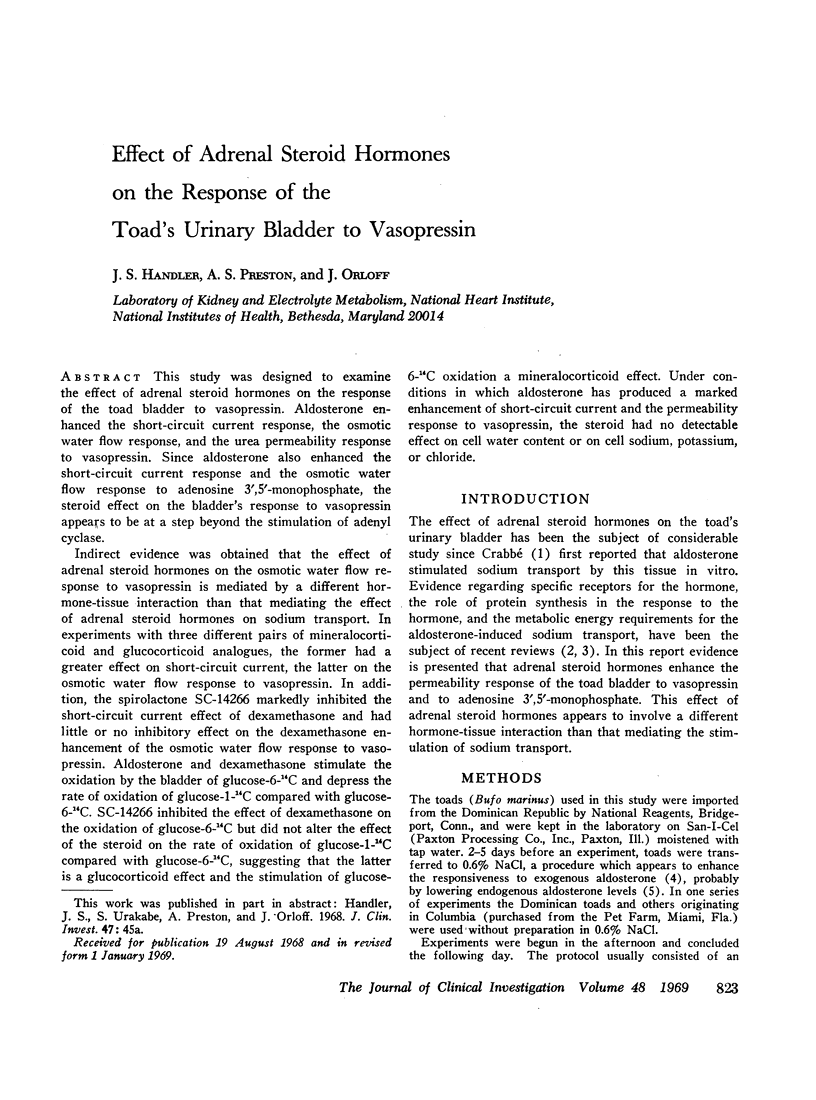
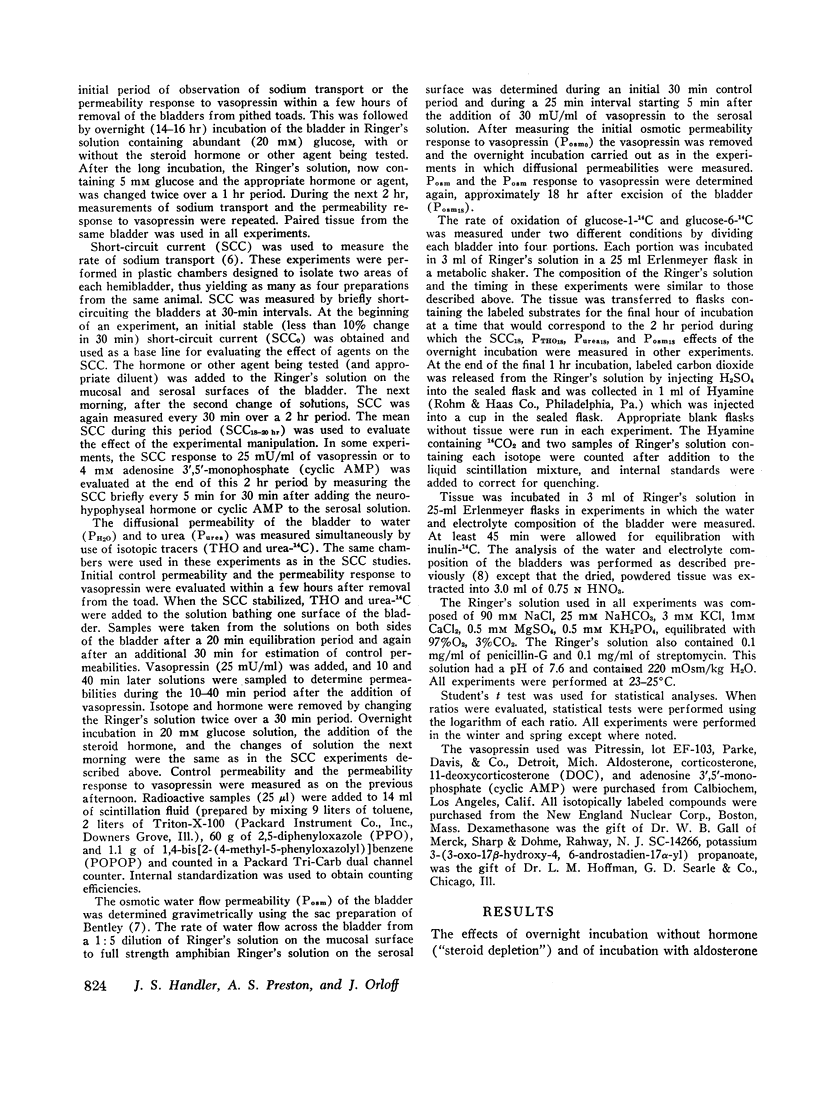
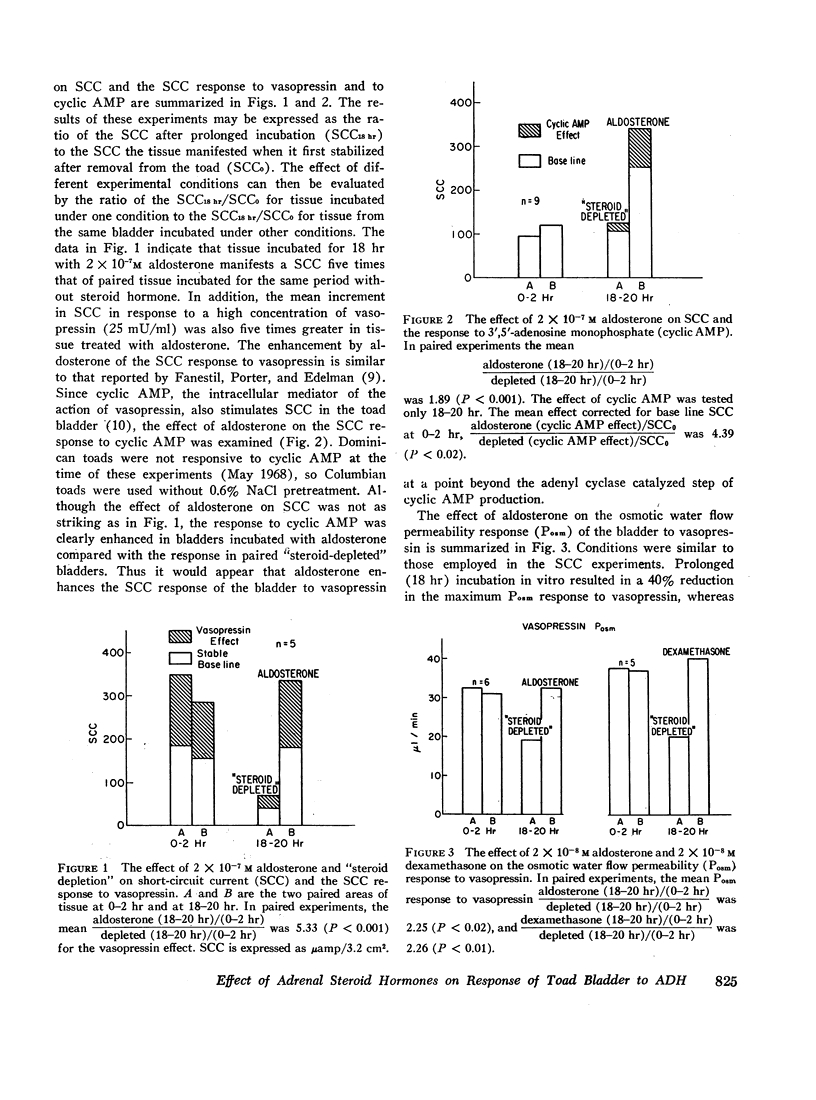
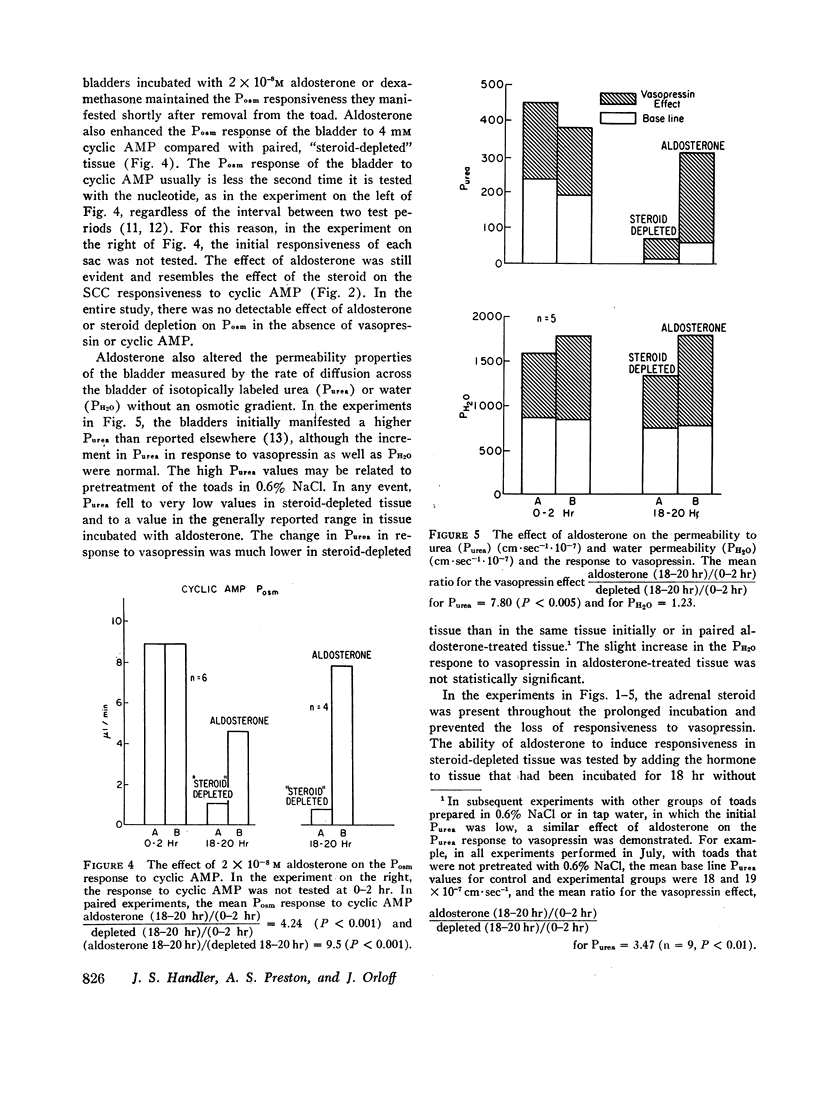
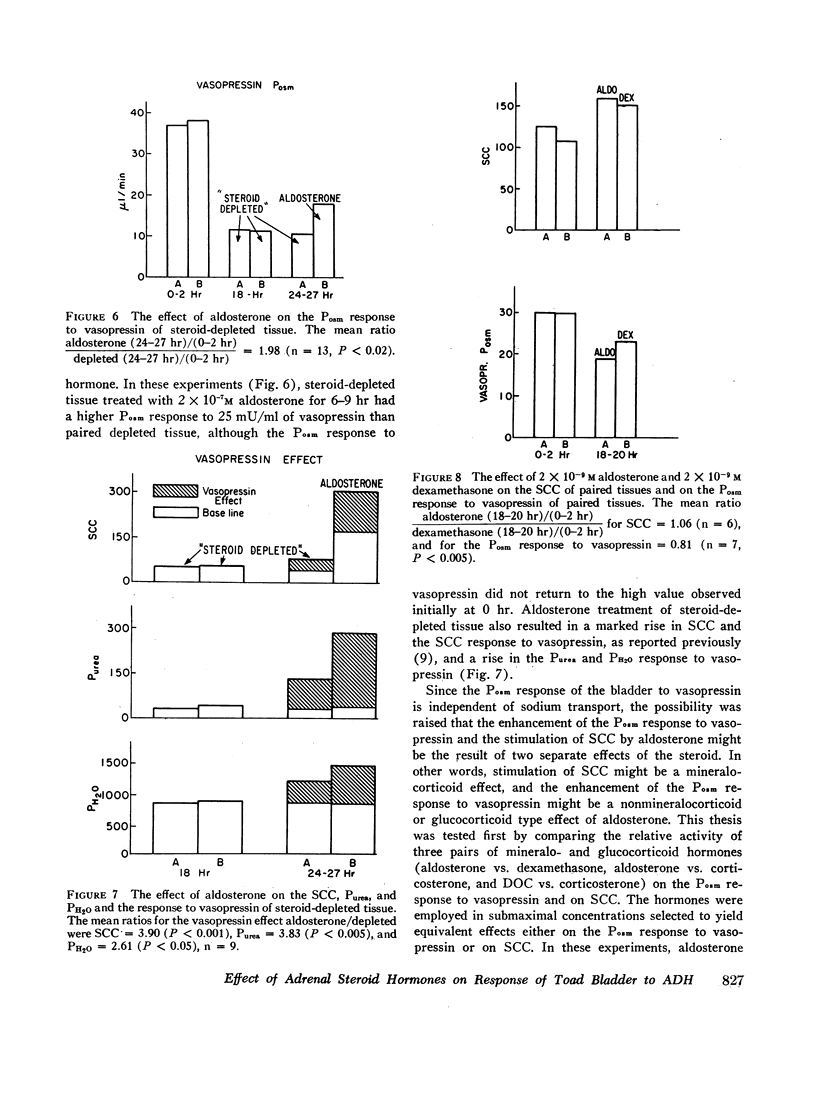
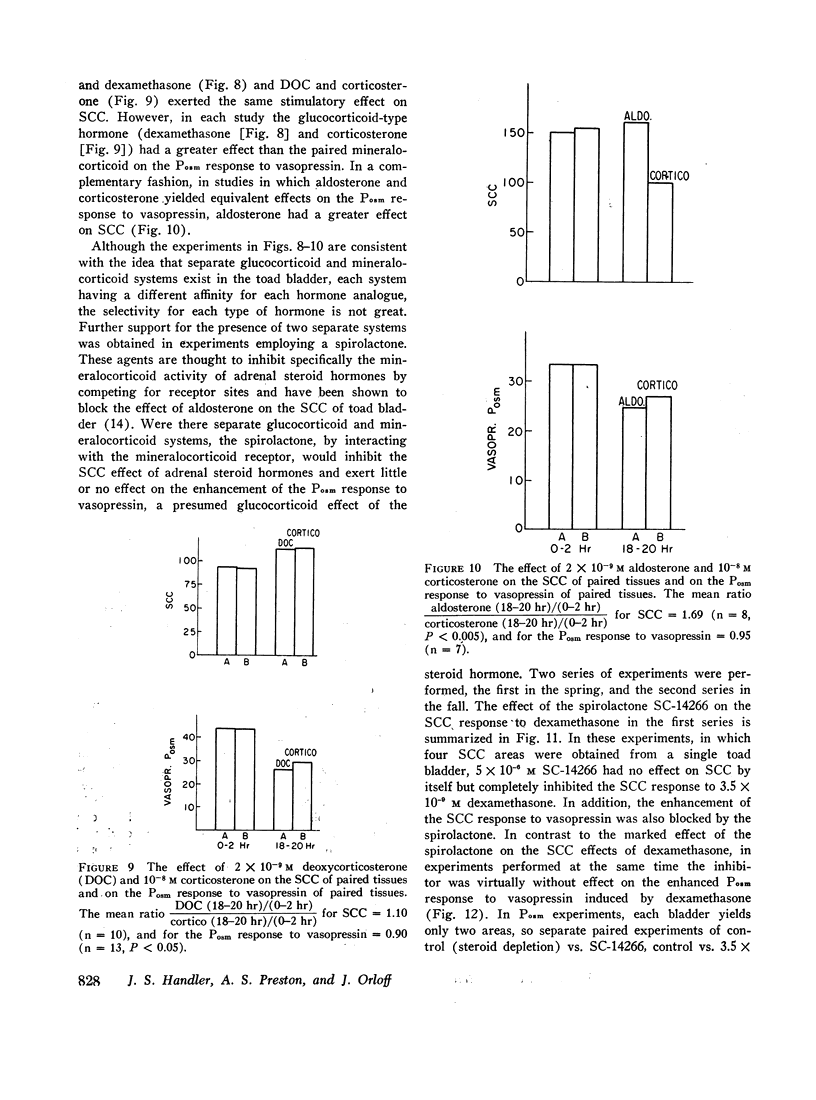
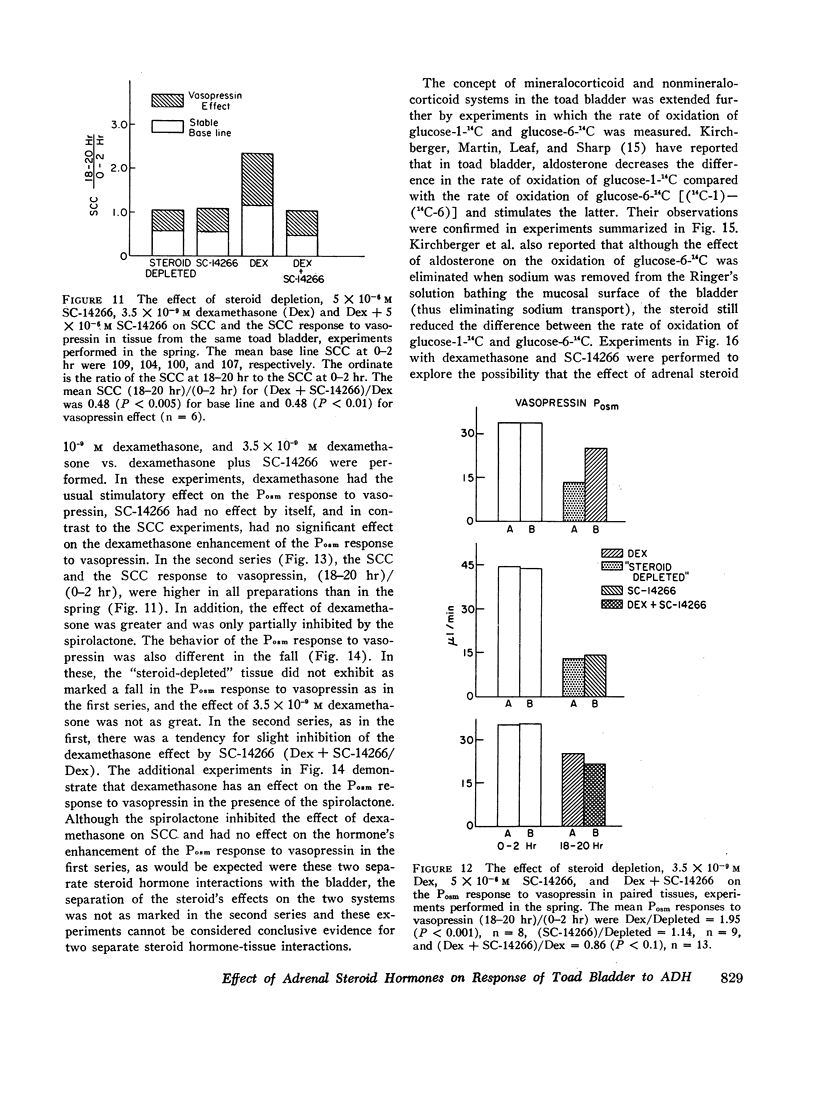
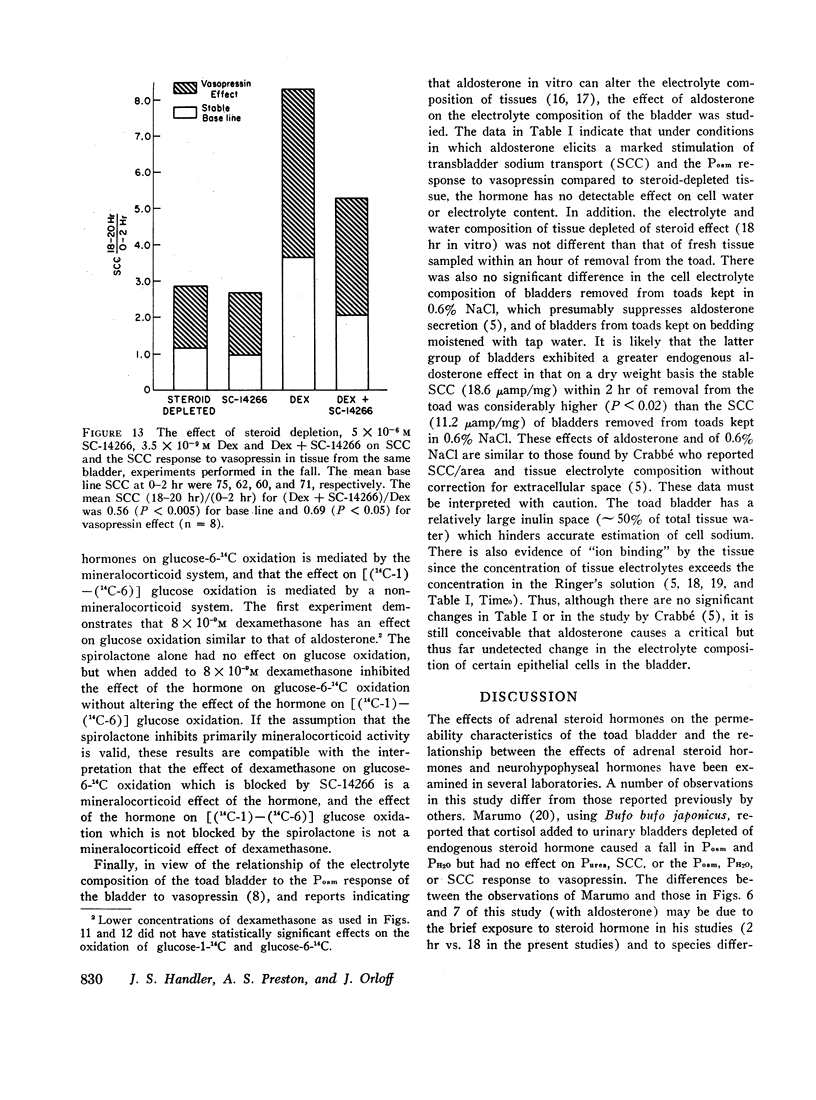
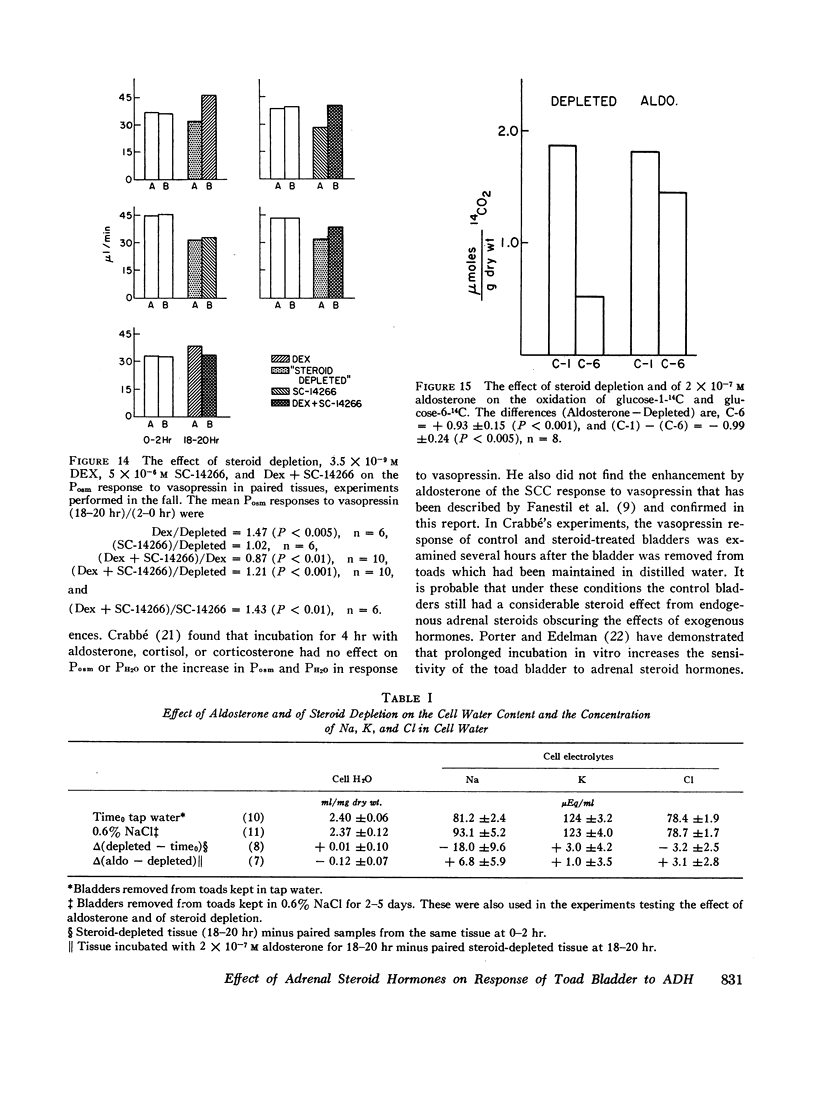
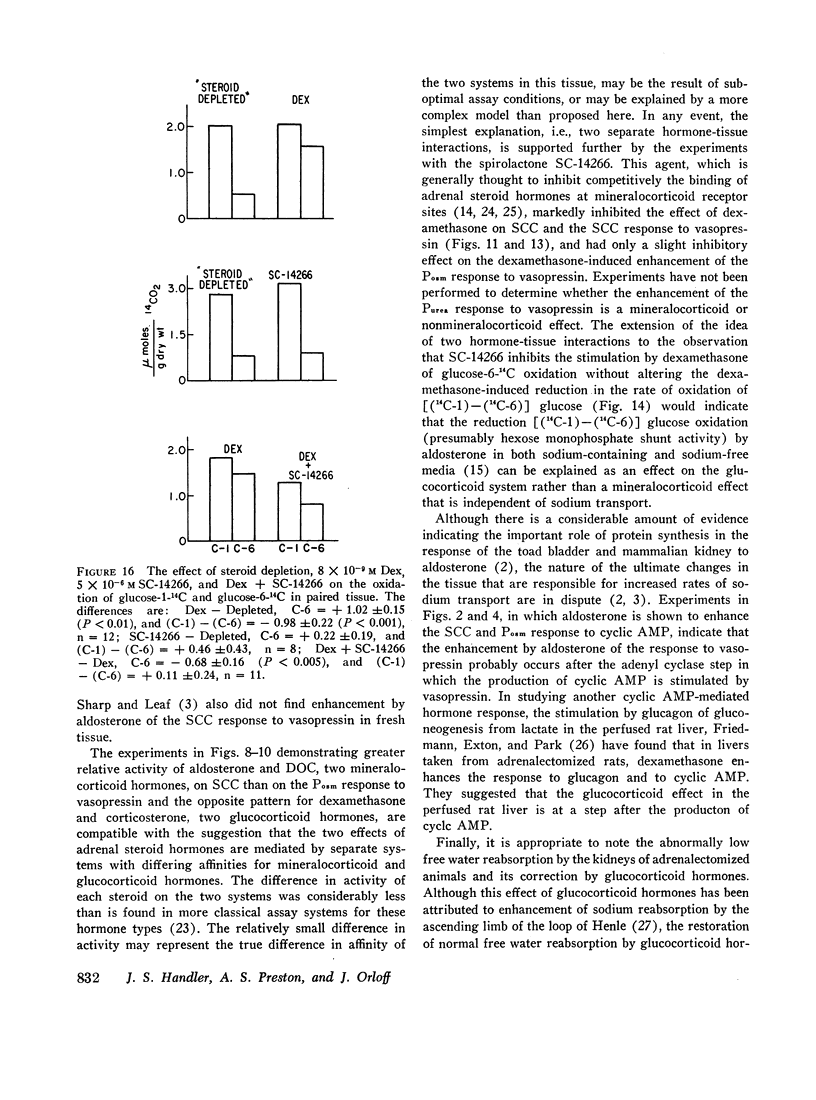
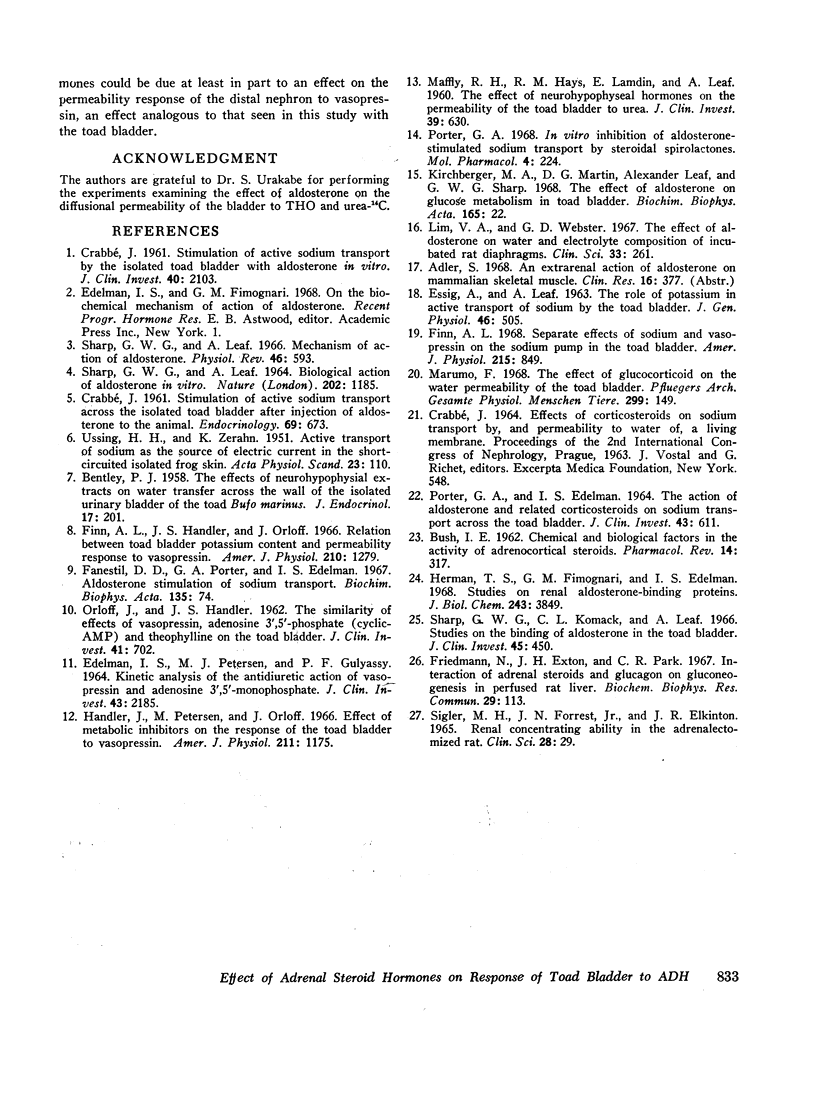
Selected References
These references are in PubMed. This may not be the complete list of references from this article.
- BENTLEY P. J. The effects of neurohypophysial extracts on the water transfer across the wall of the isolated urinary bladder of the toad Bufo marinus. J Endocrinol. 1958 Sep;17(3):201–209. doi: 10.1677/joe.0.0170201. [DOI] [PubMed] [Google Scholar]
- BUSH I. E. Chemical and biological factors in the activity of adrenocortical steroids. Pharmacol Rev. 1962 Sep;14:317–445. [PubMed] [Google Scholar]
- CRABBE J. Stimulation of active sodium transport across the isolated toad bladder after injection of aldosterone to the animal. Endocrinology. 1961 Oct;69:673–682. doi: 10.1210/endo-69-4-673. [DOI] [PubMed] [Google Scholar]
- CRABBE J. Stimulation of active sodium transport by the isolated toad bladder with aldosterone in vitro. J Clin Invest. 1961 Nov;40:2103–2110. doi: 10.1172/JCI104436. [DOI] [PMC free article] [PubMed] [Google Scholar]
- EDELMAN I. S., PETERSEN M. J., GULYASSY P. F. KINETIC ANALYSIS OF THE ANTIDIURETIC ACTION OF VASOPRESSIN AND ADENOSINE-3',5'-MONOPHOSPHATE. J Clin Invest. 1964 Nov;43:2185–2194. doi: 10.1172/JCI105092. [DOI] [PMC free article] [PubMed] [Google Scholar]
- Finn A. L., Handler J. S., Orloff J. Relation between toad bladder potassium content and permeability response to vasopressin. Am J Physiol. 1966 Jun;210(6):1279–1284. doi: 10.1152/ajplegacy.1966.210.6.1279. [DOI] [PubMed] [Google Scholar]
- Finn A. L. Separate effects of sodium and vasopressin on the sodium pump in toad bladder. Am J Physiol. 1968 Oct;215(4):849–856. doi: 10.1152/ajplegacy.1968.215.4.849. [DOI] [PubMed] [Google Scholar]
- Friedmann N., Exton J. H., Park C. R. Interaction of adrenal steroids and glucagon on gluconeogenesis in perfused rat liver. Biochem Biophys Res Commun. 1967 Oct 11;29(1):113–119. doi: 10.1016/0006-291x(67)90550-5. [DOI] [PubMed] [Google Scholar]
- Handler J., Petersen M., Orloff J. Effect of metabolic inhibitors on the response of the toad bladder to vasopressin. Am J Physiol. 1966 Nov;211(5):1175–1180. doi: 10.1152/ajplegacy.1966.211.5.1175. [DOI] [PubMed] [Google Scholar]
- Herman T. S., Fimognari G. M., Edelman I. S. Studies on renal aldosterone-binding proteins. J Biol Chem. 1968 Jul 25;243(14):3849–3856. [PubMed] [Google Scholar]
- Lim V. S., Webster G. D. The effect of aldosterone on water and electrolyte composition of incubated rat diaphragms. Clin Sci. 1967 Oct;33(2):261–270. [PubMed] [Google Scholar]
- MAFFLY R. H., HAYS R. M., LAMDIN E., LEAF A. The effect of neurohypophyseal hormones on the permeability of the toad bladder to urea. J Clin Invest. 1960 Apr;39:630–641. doi: 10.1172/JCI104078. [DOI] [PMC free article] [PubMed] [Google Scholar]
- Marumo F. The effect of glucocorticoid on the water permeability of the toad bladder. Pflugers Arch Gesamte Physiol Menschen Tiere. 1968;299(2):149–157. doi: 10.1007/BF00363661. [DOI] [PubMed] [Google Scholar]
- ORLOFF J., HANDLER J. S. The similarity of effects of vasopressin, adenosine-3',5'-phosphate (cyclic AMP) and theophylline on the toad bladder. J Clin Invest. 1962 Apr;41:702–709. doi: 10.1172/JCI104528. [DOI] [PMC free article] [PubMed] [Google Scholar]
- PORTER G. A., EDELMAN I. S. THE ACTION OF ALDOSTERONE AND RELATED CORTICOSTEROIDS ON SODIUM TRANSPORT ACROSS THE TOAD BLADDER. J Clin Invest. 1964 Apr;43:611–620. doi: 10.1172/JCI104946. [DOI] [PMC free article] [PubMed] [Google Scholar]
- Porter G. A. In vitro inhibition of aldosterone-stimulated sodium transport by steroidal spirolactones. Mol Pharmacol. 1968 May;4(3):224–237. [PubMed] [Google Scholar]
- SHARP G. W., LEAF A. BIOLOGICAL ACTION OF ALDOSTERONE IN VITRO. Nature. 1964 Jun 20;202:1185–1188. doi: 10.1038/2021185a0. [DOI] [PubMed] [Google Scholar]
- SIGLER M. H., FORREST J. N., Jr, ELKINTON J. R. RENAL CONCENTRATING ABILITY IN THE ADRENALECTOMIZED RAT. Clin Sci. 1965 Feb;28:29–37. [PubMed] [Google Scholar]
- Sharp G. W., Komack C. L., Leaf A. Studies on the binding of aldosterone in the toad bladder. J Clin Invest. 1966 Apr;45(4):450–459. doi: 10.1172/JCI105359. [DOI] [PMC free article] [PubMed] [Google Scholar]
- Sharp G. W., Leaf A. Mechanism of action of aldosterone. Physiol Rev. 1966 Oct;46(4):593–633. doi: 10.1152/physrev.1966.46.4.593. [DOI] [PubMed] [Google Scholar]
- USSING H. H., ZERAHN K. Active transport of sodium as the source of electric current in the short-circuited isolated frog skin. Acta Physiol Scand. 1951 Aug 25;23(2-3):110–127. doi: 10.1111/j.1748-1716.1951.tb00800.x. [DOI] [PubMed] [Google Scholar]


